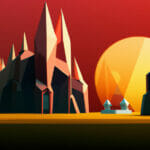Welcome to this exciting tutorial on “Roblox horror game scripting”. Designed for both novice coders and seasoned programmers, this comprehensive guide will equip you with the essential skills to start creating spooky experiences in your own Roblox games. Your journey into the thrilling arena of horror game scripting is about to begin!
Table of contents
What is Roblox Horror Game Scripting?
Roblox horror game scripting is the process of using the Roblox Lua scripting language to create nerve-racking and thrilling encounters and environments within Roblox games. It can vary from creating jumpscares, sudden appearances of monsters, or even manipulating the game environment to incite fear and suspense.
Why Should I Learn It?
By mastering Roblox horror game scripting, you not only set your games apart with unique and engaging mechanics, but you also improve your coding skills, opening the way to more advanced game development projects. This skill continues to grow in demand, bringing with it opportunities for creativity and even potential income generation through the Roblox platform.
[h2]The Power of Coding in Roblox
Scripting in Roblox empowers you to bring your game ideas to life. From designing spine-chilling scenarios to crafting the intricate details of your horror storyline, the power to create is in your hands. The more you learn, the greater your toolbox of coding knowledge becomes, and the more captivating gameplay experiences you can craft.
Creating an Eerie Environment
Before we jump into scripting, it’s essential to set up an eerie environment for your horror game. Here, we’ll show you how to alter the overall setting using a simple script in the Workspace Service to change ambient and outdoor lighting.
local LightingService = game:GetService('Lighting')
-- Adjusting Ambient Lighting
LightingService.Ambient = Color3.new(0.1, 0.1, 0.1)
-- Adjusting Outdoor Lighting
LightingService.OutdoorAmbient = Color3.new(0.2, 0.2, 0.2)Creating a Jumpscare
A classic element of horror games is the jumpscare, a sudden surprising event meant to scare the player. Here’s an example on how you can achieve this effect using Lua script.
local monster = game.Workspace.monster -- Assuming the scary entity is named 'monster'
local function jumpscare(player)
-- Teleporting the monster in front of the player
monster.PrimaryPart.CFrame = player.Character.HumanoidRootPart.CFrame * CFrame.new(0, 0, -5)
-- Playing scary sound
local jumpscareSound = Instance.new("Sound", player.Character)
jumpscareSound.SoundId = "id_to_a_scary_sound_file"
jumpscareSound:Play()
end
game.Players.PlayerAdded:Connect(function(player)
player.CharacterAdded:Connect(function(character)
jumpscare(player)
end)
end)Dynamic Environment Adjustment
You can also use script to dynamically alter the game environment based on the player’s actions or experiences, enhancing the immersion and fear factor in the game.
local function scaryEvent(player)
local LightingService = game:GetService('Lighting')
-- Darken the environment when entering a scary zone
LightingService.Ambient = Color3.new(0, 0, 0)
LightingService.OutdoorAmbient = Color3.new(0, 0, 0)
-- Play eerie sound
local eerieSound = Instance.new("Sound", player.Character)
eerieSound.SoundId = "id_to_an_eerie_sound_file"
eerieSound:Play()
wait(5) -- Waiting for 5 seconds before restoring the normal environment
LightingService.Ambient = Color3.new(0.1, 0.1, 0.1)
LightingService.OutdoorAmbient = Color3.new(0.2, 0.2, 0.2)
endUsing Timers for Scary Events
Random scares or events can also be an effective tool in horror games. The use of timers within Lua scripting allows for timed or random game occurrences, such as a frightful noise or a creepy appearance.
local function timedJumpscare(player)
wait(60) -- Waiting for 60 seconds before invoking the jumpscare function
-- Call the jumpscare function defined in previous step
jumpscare(player)
end
game.Players.PlayerAdded:Connect(function(player)
player.CharacterAdded:Connect(function(character)
timedJumpscare(player)
end)
end)Enemy AI Creation
What’s a horror game without a fearsome adversary? Using scripting, we can create an Enemy AI that follows the player around the map, adding another layer of tension and fear to your game.
local PathfindingService = game:GetService("PathfindingService")
local monster = game.Workspace.monster -- Reference to the monster in your game
local Agentparameters = Instance.new('AgentParameters')
Agentparameters.AgentRadius = 4
Agentparameters.AgentCanJump = true
local Path = PathfindingService:CreatePath(Agentparameters)
local function followPlayer(player)
Path:ComputeAsync(monster.HumanoidRootPart.Position, player.Character.HumanoidRootPart.Position)
local waypoints = Path:GetWaypoints()
for _, waypoint in ipairs(waypoints) do
monster.Humanoid:MoveTo(waypoint.Position)
if waypoint.Action == Enum.PathWaypointAction.Jump then
monster.Humanoid.Jump = true
end
monster.Humanoid.MoveToFinished:Wait()
end
end
game.Players.PlayerAdded:Connect(function(player)
player.CharacterAdded:Connect(function(character)
while wait(1) do
followPlayer(player)
end
end)
end)Creating a Health Depletion Script
Another important aspect of horror games is creating danger for the player. This script snippet will allow the monster to deplete the player’s health upon contact.
local function onTouched(part)
local player = game.Players:GetPlayerFromCharacter(part.Parent)
if player then
player.Character.Humanoid.Health = 0 -- Depleting player's health
end
end
monster.Humanoid.Touched:Connect(onTouched)Crafting a Custom Fear System
To really dial up the suspense, you might want to create a custom “Fear System”. This script gradually increases a ‘fear’ variable when the monster is close to the player. Upon reaching a certain level, the fear variable triggers a jumpscare.
local playerFear = 0
local fearThreshold = 100 -- Threshold level to trigger a jumpscare
local function increaseFear(player)
local distance = (monster.PrimaryPart.Position - player.Character.HumanoidRootPart.Position).magnitude
if distance = fearThreshold then
jumpscare(player)
playerFear = 0 -- Resetting fear level
end
end
game.Players.PlayerAdded:Connect(function(player)
player.CharacterAdded:Connect(function(character)
while wait(1) do -- The fear level checks every second
increaseFear(player)
end
end)
end)Avatar Customization for Horror
You can also manipulate the player’s avatar to contribute to the overall horror ambience. For instance, you may want to use scripting to change the player’s avatar to look more frightened or haunted as the fear level increases.
local function changeAvatar(player)
if playerFear >= fearThreshold / 2 then -- If the player's fear level reaches half of the threshold
local character = player.Character
-- Change character appearance (mesh and texture ID will depend on the desired effect)
character.Head.MeshId = "id_to_a_frightened_head_mesh"
character.Head.TextureId = "id_to_a_frightened_head_texture"
else
-- Restore normal character appearance
character.Head.MeshId = "id_to_a_normal_head_mesh"
character.Head.TextureId = "id_to_a_normal_head_texture"
end
end
game.Players.PlayerAdded:Connect(function(player)
player.CharacterAdded:Connect(function(character)
while wait(1) do
changeAvatar(player)
end
end)
end)Conclusion
Scripting horror games on Roblox can be an exciting and rewarding experience. With practice and an innovative mindset, coding in Roblox can unlock limitless possibilities for game mechanics, narrative, and player experiences.
Remember, the code snippets provided here are a starting point. Explore, alter, and combine them to build a unique immersive horror game on Roblox that stands out to players. Happy scripting!
Creating Dialogue Boxes
Dialogue boxes are often used in horror games to provide narratives, clues, or to create suspense. Here is how you can create one using GUI scripting on Roblox.
local ScreenGui = Instance.new("ScreenGui")
local TextLabel = Instance.new("TextLabel")
-- Properties
ScreenGui.Parent = game.Players.LocalPlayer:WaitForChild("PlayerGui")
TextLabel.Parent = ScreenGui
TextLabel.BackgroundColor3 = Color3.fromRGB(0, 0, 0)
TextLabel.Position = UDim2.new(0.5, 0, 0.5, 0)
TextLabel.Size = UDim2.new(0, 200, 0, 100)
TextLabel.Font = Enum.Font.SourceSans
TextLabel.Text = "Beware of the monster!"
TextLabel.TextColor3 = Color3.fromRGB(255, 255, 255)
TextLabel.TextSize = 20Using Screen Shake Effects
Shaking the player’s screen is another common method used to scare players in horror games. Here’s how you can achieve a shaking effect using CameraService.
local CameraService = game:GetService('Workspace').CurrentCamera
local function shakeCamera()
local shakeMagnitude = 0.05
for i = 1, 50 do
CameraService.CFrame = CameraService.CFrame * CFrame.new(math.random() * shakeMagnitude, math.random() * shakeMagnitude, math.random() * shakeMagnitude)
wait()
end
end
shakeCamera()Creating Flickering Lights
Flickering lights can add an eerily realistic and suspenseful ambiance to your horror game. The code below simulates a flickering light effect by rapidly changing the value of the light’s intensity.
local light = game.Workspace.light -- Assuming there's a light object in the workspace
while true do
light.Intensity = math.random()
wait(math.random()) -- Wait a random amount of time before changing again, to make the flickering seem random
endOffsetting Player Field of View (FOV)
Adjusting the player’s field of view can give the illusion of shifted perspective, adding another layer of fear and intrigue to your game.
local CameraService = game:GetService('Workspace').CurrentCamera
-- Gradually narrow the player's field of view
for i = 70, 30, -1 do
CameraService.FieldOfView = i
wait(0.1)
end
-- Gradually reset the field of view
for i = 30, 70 do
CameraService.FieldOfView = i
wait(0.1)
endCreating a Trigger to End the Game
Lastly, you may want to end the game after the player has encountered all the scares. Alternatively, provide an escape route that leads to the end of the game. Here is how you can create a trigger to end the game:
local function endGame(player)
local endGameScreen = Instance.new("ScreenGui", player.PlayerGui)
local textLabel = Instance.new("TextLabel", endGameScreen)
-- Properties
textLabel.AnchorPoint = Vector2.new(0.5, 0.5)
textLabel.Position = UDim2.new(0.5, 0, 0.5, 0)
textLabel.Size = UDim2.new(0, 500, 0, 200)
textLabel.BackgroundColor3 = Color3.new(0, 0, 0)
textLabel.Font = Enum.Font.SourceSansBold
textLabel.Text = "Game Over!"
textLabel.TextColor3 = Color3.new(1, 1, 1) -- White color
textLabel.TextSize = 75
end
game.Players.PlayerAdded:Connect(function(player)
player.CharacterAdded:Connect(function(character)
character.Humanoid.Died:Connect(function()
endGame(player)
end)
end)
end)Final Thoughts
Roblox scripting enables us to add that spark of horror, suspense, and excitement to our video games. This guide has given you some snippets of code that would go a long way in creating terrifying and thrilling gameplay scenes in your Roblox games.
Remember, innovation and uniqueness are keys to an engaging video game. Don’t hesitate to experiment and break new ground with your horror game scripting!
Further Learning: Your Journey Continues
Mastering the art of scripting for Roblox horror games opens a realm of possibilities. However, this is just the beginning. As with any skill, continuous learning and practice are key to advancement.
One way to deepen your learning and skills in this area is to check out Zenva’s Roblox Game Development Mini-Degree. Our comprehensive curriculum covers broad aspects of game development using Roblox Studio and Lua and spans various genres, such as obstacle courses, melee combat games, and first-person shooter games. Also, you’ll learn to implement core game functionalities like multiplayer support and leaderboard systems. Suitable for beginners and experienced developers, these courses offer flexibility, hands-on experience, and recognized completion certificates.
Don’t forget to explore our bustling library of Roblox courses for a more varied collection. Remember, the coding world is vast and exciting; there’s always more to discover and learn!
Conclusion
Horror game scripting in Roblox presents an exciting opportunity to craft nerve-racking experiences infused with suspense and thrill. As this tutorial has shown, key horror elements like jumpscares, eerily dynamic environments, and enemy AI can be crafted with Lua scripts. Remember, these are just starting points; the full potential of your games is only limited by your creativity and determination to evolve.
At Zenva, we’re passionate about empowering the next generation of developers. We invite you to further your learning journey by exploring our Roblox Game Development Mini-Degree and broaden your horizons. Ready to elevate your Roblox games to the next level? Let’s make the leap together!
Did you come across any errors in this tutorial? Please let us know by completing this form and we’ll look into it!

FINAL DAYS: Unlock coding courses in Unity, Godot, Unreal, Python and more.







